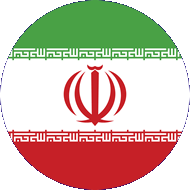Total global seaborne ferrous scrap trade volumes are expected to reach nearly 56 million tonnes (mnt) – 55.72 mnt – in calendar year 2023 (CY’23), as per provisional data available with SteelMint. Seaborne trade is expected to drop 5% y-o-y from 58.49 mnt in CY’22.
The top 8 seaborne scrap consumers this year are Turkiye, India, Bangladesh, South Korea, Vietnam, Taiwan, Pakistan, and China, which collectively contribute to 82% (45.57 mnt) of global trade.
Apart from India and Taiwan, all other countries showed a decrease in import volumes- particularly key importers such as Turkiye, Bangladesh, Pakistan, and South Korea.
Steel production falls amid macroeconomic headwinds
- All leading scrap-importing nations, except India, witnessed a decline in crude steel production in CY’23. In Turkiye, crude steel output is projected to fall by 5% y-o-y and mills remain sceptical of steel demand owing to inflation and high-interest rates. Turkish steel producers have struggled to maintain normal operations due to a weak steel sector and a fluctuating currency rate, as well as a sharp decline in exports.
- In Bangladesh, the steel sector has been sluggish amid weak sentiments for finished steel and severe forex crunch, followed by prolonged LC opening issues and subdued downstream demand. Likewise, Pakistan may see a 13% drop in steel production in CY’23 amid energy inflation, currency fluctuations, and upward adjustments in power tariffs.
- Even South Korea has lowered scrap imports by around 17% despite largely stable crude steel production due to cheaper domestic substitutes as well as weak downstream demand. So, the 36% projected growth in India’s imports in CY’23 has somewhat offset the overall contraction in global trade.
Restrictions in exporting countries
- In October this year, the UAE extended an existing ban on exports of scrap metal for three months – until 19 December. The country first imposed a four-month ban on scrap exports in May 2020 and has continued with the policy to support the developing domestic steel sector. Although exports continue to India, Pakistan, and Bangladesh, customs crackdowns in India have resulted in a drop in import volumes.
- Asia’s leading scrap exporter, Japan, which used to ship around 7-9 mnt during CY’18-20, has witnessed a decline in exports to 6.07 mnt in CY’22 from 7.02 mnt in CY’21 and 5.54 mnt in 10MCY’23. Steel major Nippon Steel is reportedly shifting some BF facilities to EAF, while in Setouchi and Hasaki new EAFs have been installed. Tokyo Steel plans to double its capacity by 2030 and JFE is considering replacing a BF with EAF at its Kurashiki plant. Besides, Japanese steelmakers are seeking to increase scrap use in BOF to lower carbon footprint. So, exports are gradually declining.
Outlook
As ferrous scrap is seen as a vital decarbonisation lever for the steel industry, more and more countries are increasing scrap use, and, as per Indian government sources, some 60 countries have imposed restrictions on exports. If the EU’s waste shipment regulations come into effect, restrictions may get tighter, thereby seriously impacting Indian steelmakers.
Dwindling supplies from Japan may reorient trade flows, forcing key Asian buyers such as South Korea, Bangladesh, and Vietnam to shift to suppliers in the US and elsewhere. The availability of higher grades, such as HS may also decrease.
Demand may rise in Q1CY’24 as inflation eases and interest rates stabilise, but seaborne supply tightness may intensify going forward.




